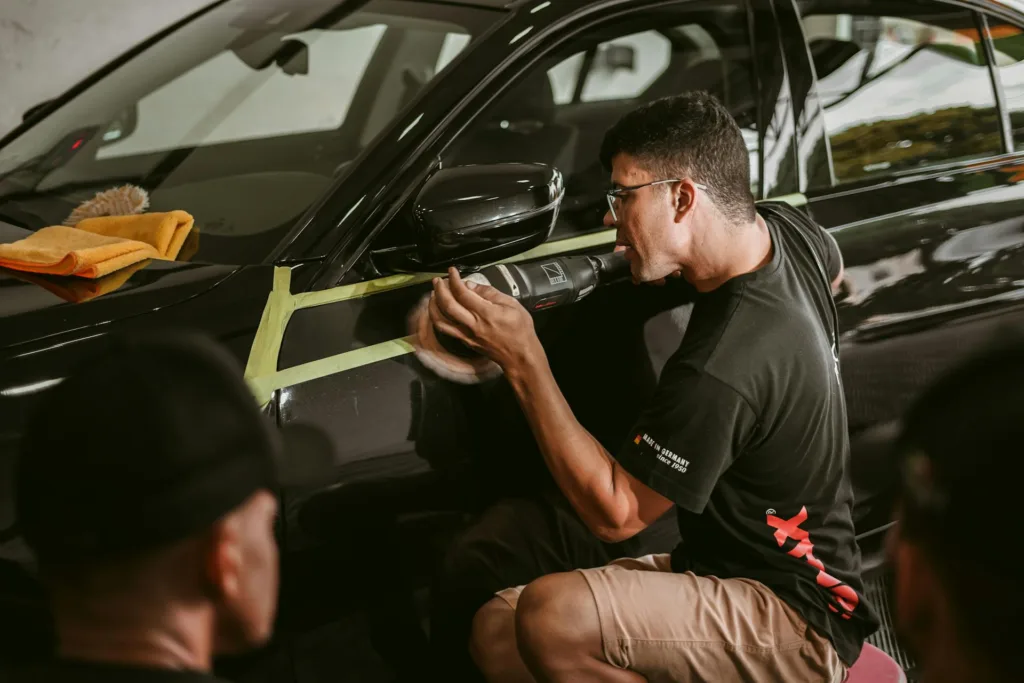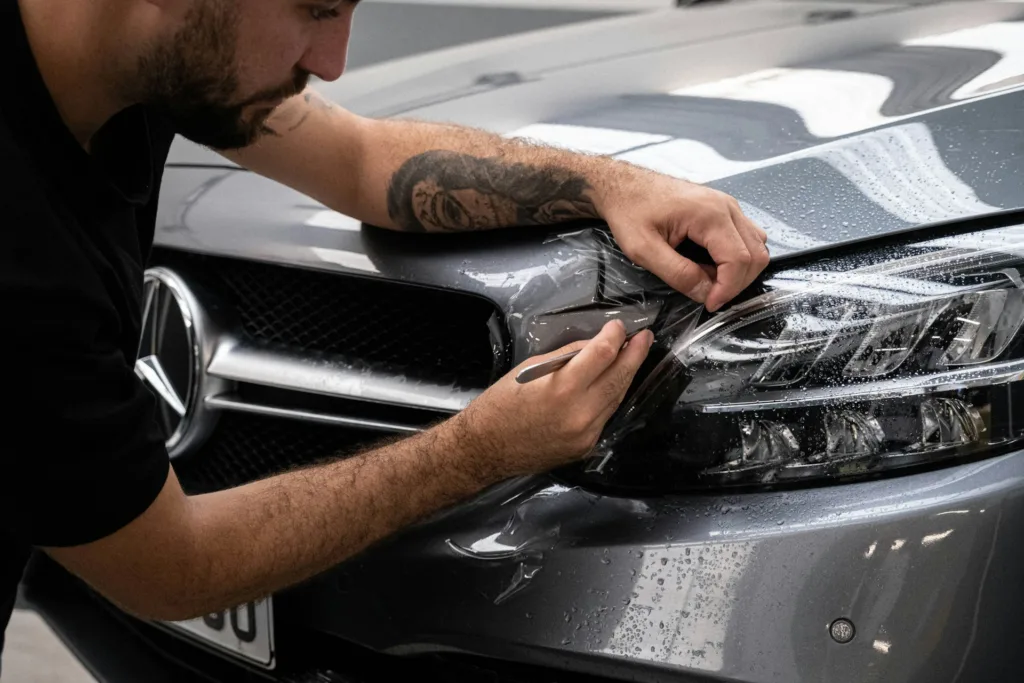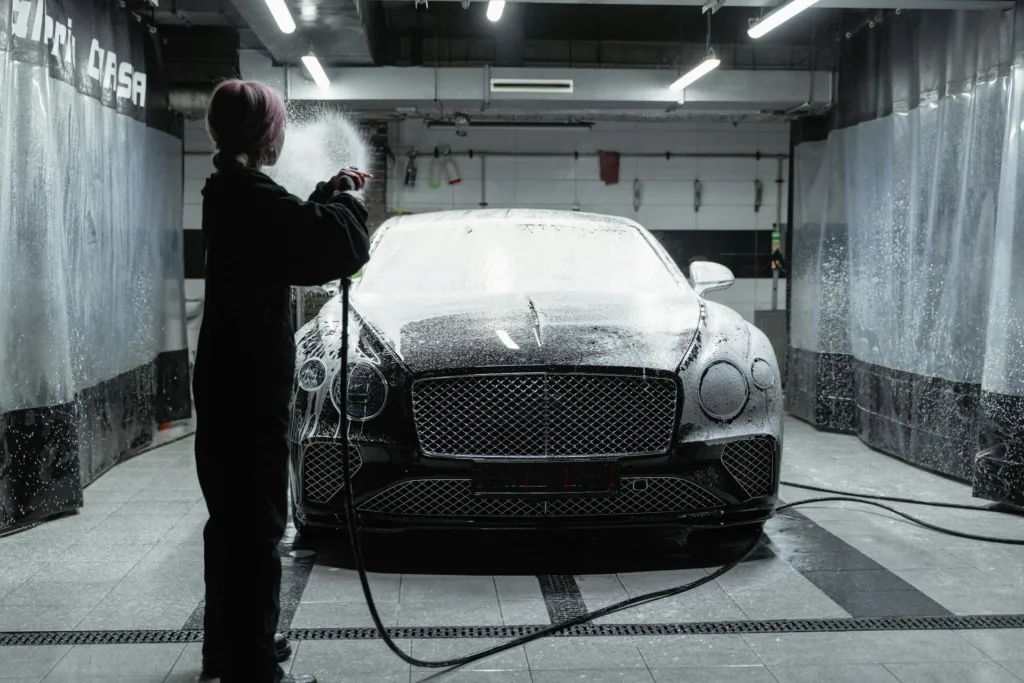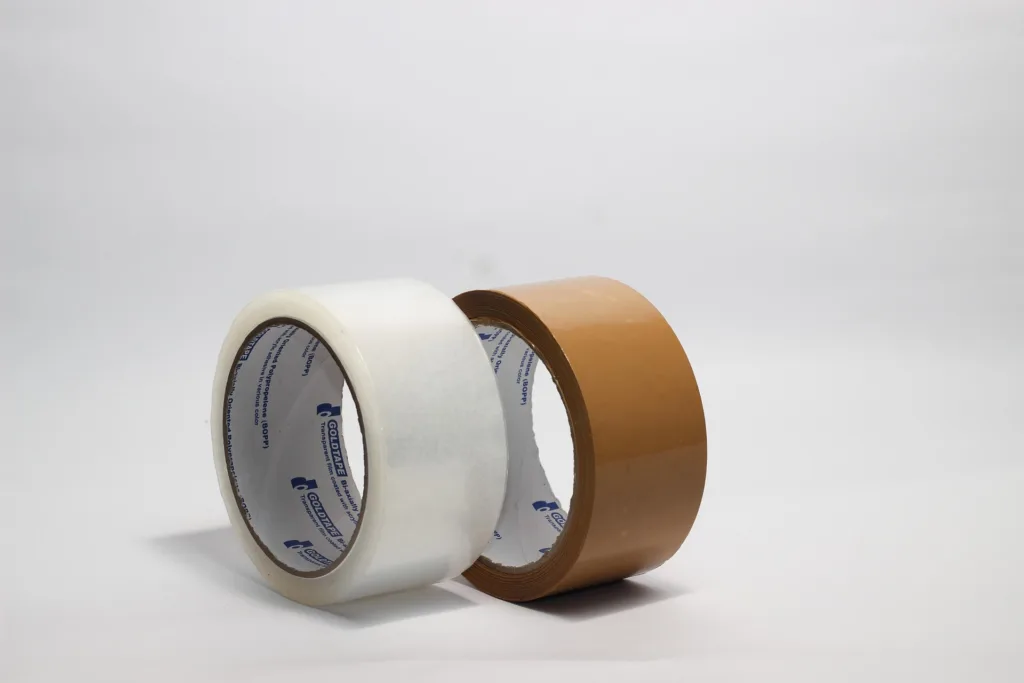
Automotive masking tape is a special type of adhesive tape designed specifically for use in vehicle painting and detailing. Often referred to as car masking tape, it differs from ordinary household masking tape in its materials and performance. Automotive masking tape can withstand high temperatures in paint booths, resist solvents and moisture, and peel off cleanly without leaving residue.
In other words, it’s a purpose-made automotive tape for critical tasks like auto body repainting and precision detailing. This article explains what automotive masking tape is used for, how it differs from regular tape, and tips for choosing the best automotive masking tape for your needs. Auto painters and detailers alike depend on these tapes – using masking tape for car detailing and refinishing work to ensure crisp lines and avoid damage to the trim.
Features of Automotive Masking Tape vs. Regular Tape

Using the correct tape is crucial for quality paintwork. Standard general-purpose tapes or painter’s tape from a household toolbox might not suffice for automotive projects – they can fail under high heat or leave sticky deposits on your car’s surface. Automotive masking tapes are engineered for the demands of auto body shops:
- Heat Resistance: They tolerate the elevated temperatures of baking ovens or heat guns used during curing. Many automotive masking tapes are rated to withstand around 80–120°C without deforming or losing adhesion.
- Strong yet Clean Adhesive: The adhesive formulation is strong enough to stick through spraying and sanding but peels off cleanly. There’s no crumbling or gummy residue left behind on the vehicle’s paint. This clean removal is vital for achieving sharp paint lines.
- High Conformability: Automotive masking tape (often made from crepe paper or washi paper) are flexible and conform to the curves and contours of a car’s body. This allows you to mask around edges, emblems, or mouldings neatly. For intricate curves or designs, thin fine-line masking tapes (usually vinyl) are available.
- Solvent and Moisture Resistance: Unlike cheap paper tape, automotive masking products won’t soak through or dissolve when exposed to auto paints, thinners, or water. They maintain a secure barrier, even when applying water-based paints or wet sanding.
Uses in Painting and Detailing

In auto-body paint masking, masking tape is used to cover areas that must not be painted. For example, when repainting a car door, technicians will mask off the window glass, chrome trim, headlights, and adjacent panels. The tape ensures a crisp separation between the new paint and the protected areas. Paired with masking paper or plastic sheeting, it prevents overspray from reaching unwanted surfaces.
Detailers also rely on masking tape for car care tasks. Before machine-polishing or buffing a vehicle, it’s common to apply masking tape used for car detailing – covering rubber window seals, emblems, and plastic trim. This safeguards those parts from polish stains or accidental scuffs from the polishing pad. Because the tape is removed cleanly, detailers can confidently use it on delicate surfaces and then peel it away to reveal clean, wax-free trim once the job is done.

Another use is during two-tone paint jobs or racing stripe applications. Fine-line automotive masking tapes help achieve precise pinstripes or complex paint designs. These tapes can create sharp edges and tight curves without paint bleed. Once the paint is sprayed and still slightly wet, the tape is carefully pulled up at a low angle, resulting in a crisp, professional paint line.
Tips for Using Automotive Masking Tape
For anyone new to using masking tape, there are a couple of key concepts to keep in mind for the best results. Below, we have listed some of our top tips in order to help you achieve safe vehicles regardless of your level of experience.

- Surface Preparation: Ensure the car surface is clean and dry before applying tape. Remove any wax, grease, or dust – contaminants can prevent the tape from sticking properly.
- Firm Application: Apply the tape with pressure, especially along the edges where the paint will be sprayed. Pressing down the edges firmly helps seal them and prevents any paint from seeping underneath.
- Tape Removal Timing: For paint jobs, peel off the tape as soon as the paint is tack-free but not fully cured (usually within minutes of finishing the final coat). Removing it too late can cause the paint to chip or tear along with the tape. Remove slowly and at a 45° angle to avoid lifting fresh paint.
- Use the Right Width: Choose tape widths appropriate for the job. Wide tapes (e.g. 50 mm) cover broad areas quickly, while narrow tapes (e.g. 6 mm fine lines) are ideal for tight curves and details. It’s common to use a combination – wide tape for bulk coverage and narrow tape for precision edges.
Choosing the Best Automotive Masking Tape
Not all masking tapes are equal, and the “best” choice depends on your application. Typically, temperature, duration and surface sensitivity are key things to consider, but the brand and quality of the tape can play a significant role.

- Temperature Requirements: If you bake the paint or use heat lamps, ensure the tape’s temperature rating meets or exceeds those conditions. High-performance automotive masking tape will maintain adhesion through bake cycles.
- Duration of Use: Some masking tapes are designed for short jobs (a few hours), while others can be left on for days. If you’re doing a long restoration project, look for tapes that can stay in place longer without hardening or leaving residue.
- Surface Sensitivity: For very delicate surfaces or custom finishes, consider speciality low-tack masking tapes. These have gentler adhesives to avoid pulling up underlying paint when removed.
- Brand and Quality: Established brands like 3M, Tesa, or Norton offer reputable automotive masking tapes that professionals trust. While bargains exist, using a quality tape often saves time and rework. A premium tape that guarantees clean removal and crisp lines is usually worth the slight extra cost for critical paint jobs.
If you are unsure which product is right for your task, consult with an expert or supplier. It may take some experimentation to find the best automotive masking tape for your particular workflow, but investing in a good tape will show the final result.

Automotive masking tape is an indispensable tool whenever you’re painting or detailing a car. It ensures professional, showroom-quality results by keeping paint only where it’s intended. Instead of improvising with ordinary tapes, always use proper automotive masking products for any body shop or DIY project on your vehicle.In addition to masking tapes, there are other tape solutions to help with auto work. For instance, large adhesive masking films (part of our misc. adhesive tapes range) can cover entire sections of a vehicle, and surface protection films (a kind of protection tape) guard paintwork during repairs.
Conclusion
While automotive masking tape is ideal for paint edges and precision masking, you may also need strong double-sided tapes for re-attaching trims or other miscellaneous adhesive tapes for specific tasks.
Working with a leading adhesive manufacturer in the UK like Flowstrip ensures you have access to all these tape varieties. With the right high-quality tape in hand, you can tackle automotive projects confidently, knowing you’ll get clean lines, protected surfaces, and a finish that looks truly professional.
